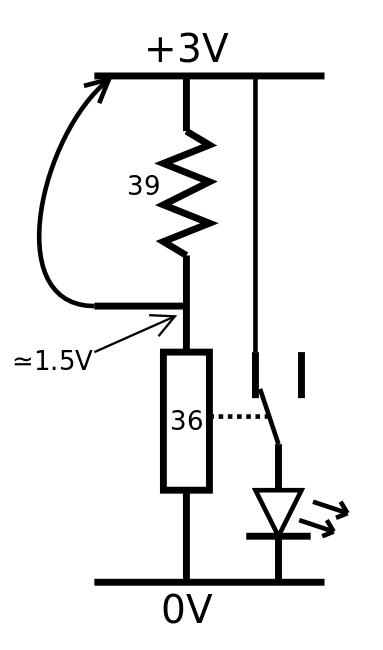This hysteretic latch is pretty simple and nice, and I have explored some of its practical characteristics (such as retention time and others) but I always try to improve things.
One welcome improvement is power consumption, and I'd like to reduce the average operating current and voltage. Reducing power also reduces heat-related issues, space, costs, etc. but it can require an increase in the number of parts.

After all it's hard to do simpler than a relay and a resistor so how can we make the circuit more efficient ?
One proposed idea is to replace the resistor with a diode. I have some germanium diodes that work sufficiently well at these currents (in the 30mA ballpark) so why not try ?
The net effect is to decrease the power supply's voltage by almost 1V because only 0.6V is dropped (instead of 1.6V) and the energy of the capacitor is totally directed to the relay, The capacitor value could then be reduced (or its own power supply). But... it wouldn't work ! Latching would work great but not the release !
To clear the state of the relay, a pulse at 0V is applied to the coil, which is powered by the diode. This forces the diode's electrode to a much lower voltage, or a much higher current (beyond the rated values). It's close to a short circuit from the +3V to 0V through the poor diode that would die young.
A gain in one side is a loss on the other side... Increasing the efficiency of the latch greatly reduces the efficiency of the release. And this little game also happens with other parameters as we dial buttons and add or replace parts.
For example, we see that the release requires a 0V pulse on the coil, and this also draws current from the power supply. So even if we have a diode, we still need the series resistor to limit the current. The ideal circuit would be a current generator but they are not available (a transistor would do it easily but they are ruled out...)
Every deviation from the above circuit creates a new problem or burden, so I will KISS it :-)
For the multi-bits assemblies, the critical parameter will be the voltage across the coil, which must be close to the average of the latch and release voltage. This is what I try to automatically measure with #ReTest-RPi.
 Yann Guidon / YGDES
Yann Guidon / YGDES
Discussions
Become a Hackaday.io Member
Create an account to leave a comment. Already have an account? Log In.